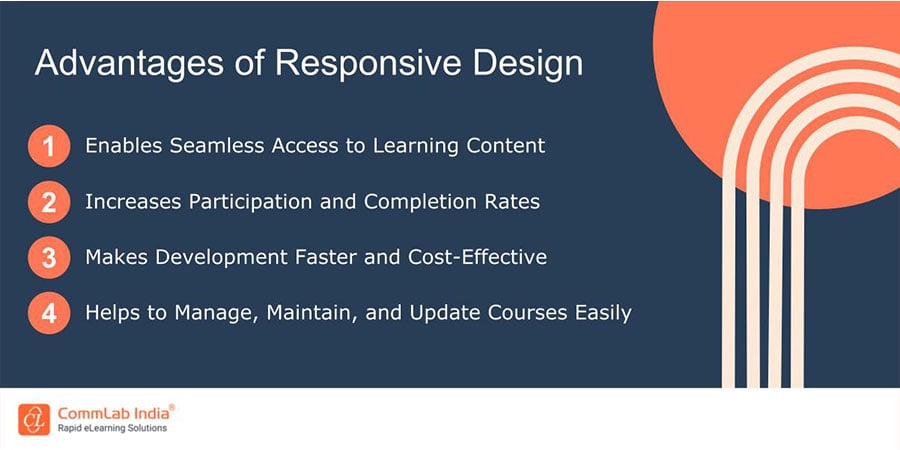How to Select a Partner for Microlearning Design and Development
Discover how to choose the perfect microlearning partner for effective corporate training. Make informed decisions for training success now!

In today's fast-paced business environment, traditional training methods often struggle to keep employees engaged and informed. Microlearning addresses this challenge by offering training modules that are concise and engaging. Developing effective microlearning modules requires a combination of instructional design expertise, technology proficiency, and creativity. This is where partnering with a dedicated microlearning design and development agency or professional becomes essential. This blog will help you select the best microlearning partner for your organization.
Trying to Find the Perfect Partner for Microlearning Design and Development?
Here’s the basic criteria to choose the right one -
- Expertise and experience
- Customization capabilities
- Instructional design competency
- Technology and platform expertise
- Project management and communication
Understanding Your Training Needs
1. Assessing Your Organization's Training Goals
Before embarking on the journey of selecting a microlearning partner, it's crucial to have a clear understanding of your organization's training objectives. What are you trying to achieve through training? Is it skill development, compliance training, onboarding, or something else? By defining your goals, you can align your partner selection process with your specific needs.
2. Identifying Specific Learning Objectives
Successful microlearning is built around well-defined learning objectives. These objectives should be specific, measurable, achievable, relevant, and time-bound (SMART). For instance, if your goal is to improve sales performance, a specific learning objective could be to increase product knowledge among your sales team by 20% within three months.
3. Determining Target Audience and Learning Preferences
Understanding your target audience is crucial for effective microlearning. Consider factors such as the age, job roles, and prior knowledge of your learners. Additionally, take into account their preferred learning styles and preferences. Some learners might prefer interactive simulations, while others may prefer short video lessons. Knowing your audience ensures that the microlearning content resonates with them and maximizes engagement.
4. Budgetary Considerations
Budget plays a significant role in the selection of a microlearning partner. It's essential to establish a realistic budget for your microlearning project. Consider costs associated with content creation, technology, and ongoing maintenance. While microlearning is often cost-effective, investing adequately in quality content development is essential to achieve meaningful results.
→ Download Infographic Now: Microlearning Benefits
The Benefits of Outsourcing Microlearning Design and Development
1. Cost-Efficiency
Outsourcing microlearning design and development can be cost-effective compared to maintaining an in-house team. You save on hiring, training, and infrastructure costs. Moreover, reputable partners often offer scalable pricing models, allowing you to pay for what you need when you need it.
2. Access to Expertise
Microlearning specialists bring a wealth of experience and expertise to the table. They understand the nuances of effective microlearning, including instructional design principles, multimedia production, and user experience. Partnering with experts can result in high-quality, engaging learning experiences.
3. Speed and Scalability
Outsourcing allows for quicker development and scalability. Experienced partners have streamlined processes and access to resources, enabling them to create and deliver microlearning content efficiently. This agility is particularly valuable when you need to respond swiftly to changing training needs.
4. Focus on Core Competencies
By outsourcing microlearning, your organization can focus on its core competencies while leaving the training development to the experts. This strategic move can lead to increased productivity and better allocation of resources.
Here’s an additional outsourcing vendor qualification checklist to help you choose -

Criteria for Selecting the Right Partner
Selecting the right partner for microlearning design and development is a crucial decision that can significantly impact the effectiveness of your corporate training initiatives. To make an informed choice, you should evaluate potential partners based on several key criteria:
1. Expertise and Experience in Microlearning
- Case Studies and Portfolio: Examine the partner's portfolio and case studies to get a sense of their previous work. Look for projects that align with your industry and training needs. Pay attention to the quality, creativity, and effectiveness of their microlearning solutions.
- Industry Experience: Industry-specific knowledge can make a significant difference in the effectiveness of microlearning solutions. Partners with experience in your industry are better equipped to understand your unique challenges, compliance requirements, and training goals.
2. Customization Capabilities
Ensure that the partner has the capability to customize microlearning solutions to suit your organization's specific needs. Cookie-cutter approaches may not effectively address your training objectives and the nuances of your workforce.
3. Instructional Design Competency
Effective microlearning content is built on solid instructional design principles. Verify that the partner has a team of instructional designers who are well-versed in adult learning theory, content structuring, and interactive learning strategies. They should be able to create content that not only imparts knowledge but also engages and motivates learners.
4. Technology and Platform Expertise
The partner should have a strong technical foundation and expertise in using the latest eLearning authoring tools and platforms. Ensure compatibility with your existing learning management system (LMS) or other technology infrastructure. Ask about their proficiency in creating mobile-friendly and responsive microlearning content.

5. Project Management and Communication
Effective project management is vital for the successful development of microlearning content. The partner should have a well-defined project management process in place. They should be able to provide clear timelines, milestones, and regular progress updates. Communication channels should be open and responsive to address any concerns or changes promptly.
By thoroughly evaluating potential partners based on these criteria, you can narrow down your choices to those who align best with your organization's goals and needs. Remember that the partner you select will play a crucial role in shaping the quality and effectiveness of your microlearning initiatives, so a comprehensive assessment is essential.
Taking Care of Quality Assurance, Testing, Compliance, and Security
- Quality Control Measures - Your microlearning partner should have robust quality control processes in place. This includes proofreading, content accuracy checks, and adherence to design standards to maintain high-quality content.
- User Testing and Feedback - Conduct user testing with a representative sample of your target audience. Gather feedback to identify areas for improvement in content delivery, engagement, and usability.
- Revision and Improvement - Based on user feedback and ongoing evaluations, be prepared to make necessary revisions and improvements to your microlearning content. A commitment to continuous enhancement ensures that your training remains effective and up to date.
- Data Security and Privacy - If your training content involves sensitive data, ensure that stringent data security measures are in place. This includes encryption, access controls, and compliance with data protection regulations such as GDPR or HIPAA.
- Compliance with Regulatory Requirements - Depending on your industry, you may have specific regulatory requirements for training content. Verify that your microlearning partner understands and complies with these regulations to mitigate legal risks.
- Accessibility and Inclusivity - Ensure that your microlearning content is accessible to all learners, including those with disabilities. Compliance with accessibility standards, such as WCAG, ensures that everyone can benefit from your training materials.
Parting Thoughts!
In conclusion, selecting the right partner for microlearning design and development is a critical decision for any organization seeking to enhance its corporate training initiatives. Microlearning's effectiveness in delivering bite-sized, engaging, and targeted training content is well-documented, but its success greatly depends on the quality of content and the expertise of the development partner. If you need more quick help to get started with microlearning, here’s the an infographic you shouldn’t overlook.


![Microlearning — How to Leverage it for Macro Results [Infographic]](https://no-cache.hubspot.com/cta/default/59327/16407642-6662-4ba8-882c-72f2b0b9f493.png)


